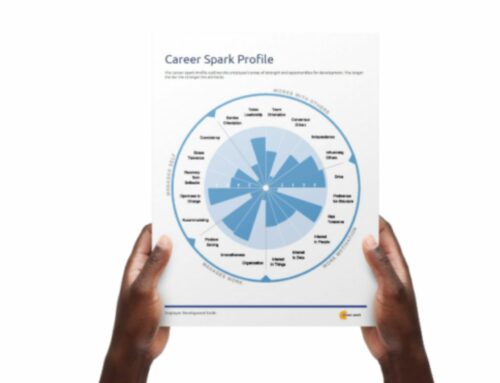Same me, same company… different results.

Jamie Schneiderman | May 2, 2019
Companies invest a ton of money to attract people to work for them. The focus is on the ‘best and brightest’ – what they refer to as “top talent”. Sounds like a great goal – but words are cheap – so what exactly does talent mean? What factors make a top performer? Do they change over time? Are they the same for every job in the company? Who decides what success is?
While the mission to attract “top talent” gets a lot of attention, companies rarely place the proper effort and focus on answering those important questions. The answers are critical for both attracting the right people and then doing the things necessary to retain them, engage them, and make them as successful as possible throughout their career.
Unfortunately, instead of answering these questions and establishing clear, objective definitions and measures for what talent truly means, we frequently end up with lots of opinion, bias, and guesswork.
To illustrate my point, I’m going to share a personal story about where I started my career: Procter and Gamble. It’s one of the most highly regarded companies in the world and well known for attracting talent.

P&G was my first job. I was a hard working 22-year old who had gone through the full recruiting process and a successful summer internship and received a full-time offer after graduation. I moved across the country, super excited and ready to make my mark!
But the excitement quickly turned into frustration and major stress. About a year into the job I was placed on the dreaded “3 month plan”. Nobody tells you what that actually means, but they don’t have to, because everyone already knows: they were quietly urging me to look for another job because they were going to “manage” me out of the company. The question was, why?
While I, of course, wasn’t perfect at my job, I had gone through their recruiting process and had even worked there as an intern. You’d figure that those factors would set me up to be successful…
So what was the problem? What wasn’t I doing?
First, I should have known how the company and, more specifically, my boss, actually defined job success. This may seem like a simple concept, but it wasn’t nearly as clear and consistent as it should have been. I was doing what I was told but it turns out there was a different measuring stick for performance that I wasn’t made aware of until it was too late.
Second, I should have made sure that key stakeholders not only noticed the work I was delivering but also let others in the organization know about me. Essentially, I needed my boss and her boss to talk me up.
As I continued to just try and keep my head down and work hard, company changes meant I was given a new boss several times in a short amount of time, and with each new boss, a new set of expectations and challenges were introduced. As much as I wanted to succeed, shifting expectations plus the well had been poisoned since everyone knew I had been put on the ‘3-month plan’ had me running in quicksand. I knew things needed to change quickly if I wanted to keep my job. I asked someone in HR what normally happens. She told something that has stuck with me till today:
“Nobody in your situation sticks around – they all leave”.
Fortunately, I finally caught a break with a change to yet another new boss. Determined to change my course at Procter and Gamble, when I met my new boss I asked her for one thing – “please evaluate me based on what you see and what I do and not based on what you’ve heard before.” Thankfully, she did. This fresh start empowered me to succeed or fail based on my own merit, for the first time in my nearly 2 years at P&G.
I continued to work hard, leveraged my strengths and tried to learn and develop around the areas I wasn’t as strong in – just like I always had at P&G. However, this time I had a boss who was going to at least give me the benefit of the doubt, supported my growth and clearly outlined what things I needed to do to succeed. And succeed I did. The same guy who was on his way out of the company was now being considered a top performer and was in line for a promotion. The company, including even the President, had taken notice of this crazy come-back story.
“How the heck did someone who everyone had thought was a failure and was about to get canned, all of a sudden become a top performer?”
My story happens every day to millions of people. While my combination of luck and stubbornness had a good but rare outcome, most people struggle with the stress and frustration of “failing” at a job and end up leaving. The same person, placed in different situations even in the same company can go from failure to hero or vice versa. The issue isn’t the employee, it’s the way companies look at their people. They frequently don’t set people up to succeed the way they should and then blame them when they don’t. Instead of investing in employee engagement tactics and creating a successful career path for them, they quit on them and move on to the next batch of new talent.
I continue to draw on this experience and have spent the better part of the last 10 years working to make this change. Reducing the level of subjectivity in company decisions and engaging employees with better information to build successful, lasting careers – in the place that’s right for them. I hope this story helps you either realize you aren’t alone or, if you’re a manager, that there’s more you can do to improve employee engagement and make sure your people succeed.
 Jamie Schneiderman
Jamie Schneiderman
Our Mission: Getting everyone in their right jobs to drive success at work.
Interested in connecting? Send me a note via email or connect with me on LinkedIn













